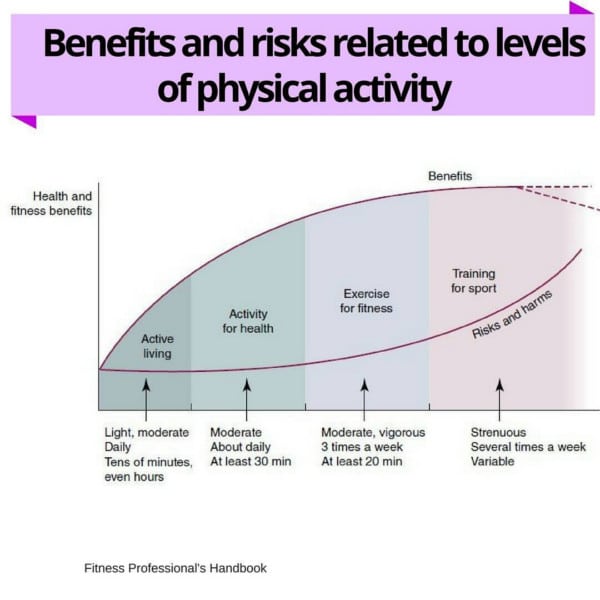Start the morning with a tasty meal, walk with a dog or go for a run. Running in the morning is a popular activity among active people. We can find many reasons why people wake up early, get out of bed and run. Some want to maintain health whilst others want to lose weight or boost endurance.
Taking into consideration the various needs and fitness level of a wide audience, I will give you 7 tips which will help you find out how to start running in the morning.
1. I can’t run
I know that running is not always the best choice. Maybe you don’t feel well or even have pain in your back, ankles or knees while running.
What to do?
Rest Easy!
Running is only one of the plentiful available activities to choose from. Instead, you can opt for others such as cycling, swimming, Nordic walking, etc. These activities are different, but certainly not less beneficial.
Just so you know, you can improve many physical skills while exercising. Running mainly improves speed and endurance. When you mix various or choose other activities, you can improve your strength, flexibility or coordination.
Furthermore, strength training reduces the risk of osteoporosis. Nowadays, women tend to be at a greater risk for osteoporosis.
Combine different activities and you will be strong, fast and flexible. All in one!
2. Benefits of being active
Look around! Many people are spending their time staring at their smartphone, laptops or tablets. Nowadays, we are looking at our screens more than ever. Moreover, robots are beginning to replace labor and automation plays an important role in everyday activities. Human beings prefer to be inactive rather than active. Worldwide, 31 % of adults are physically inactive.
In order to motivate you, I’ve listed below the health benefits that regular exercise gives us. It doesn’t matter whether you are running or cycling, or exercising in the morning or evening. All exercise will benefit us.
- lower premature mortality rate;
- better cognitive function;
- lower risk of type 2 diabetes;
- boost weight loss;
- reduce depression;
- prevent falls;
- lowers risk of some cancers;
- prevent weight gain;
- lowers risk of high blood pressure and stroke;
- improves sleep quality.
I could extend the list, however, I hope that now you are clear about all the advantages.
In addition, let’s briefly look into some physiological changes from endurance training. Those who exercise regularly tend to have a larger heart and increased density of capillaries in the muscles.
What are the benefits from such changes?
Blood can transport more oxygen, hormones, and nutrients into the muscles. It results in more muscle energy (ATP molecules) and better performance.
3. How to start running
Now, you understand the health benefits we get from an active lifestyle. What’s next? How to begin running?
Start by walking if you feel a little unfit. Start off slowly, then gradually increase your walking time, speed and distance. Your first goal is to walk 4 times a week for 30 minutes in each session without over-exerting yourself.
Of course, you can start by walking just 10 – 15 minutes and gradually build up to 30 minutes. Adjust it to your fitness level. After reaching your first goal, start to combine short bursts of running with your walking. And again, your target goal is to run/walk for 30 minutes 4 times a week, again without over exertion.
And now you are ready to go ahead and begin running. Hit your third goal and run 4 – 5 times a week for at least 30 minutes…
The next step is to increase running time, speed, frequency and distance. However, it isn’t a necessity for those who simply want to maintain their health.
How to go to the next level?
At first, increase running distance by 10%. You can do it for a couple of weeks and only afterward think about greater intensity. This could help you to smoothly move to the more difficult level. The more effort you put in your workouts the better the result will be.
Think about the place where you will be running. Air quality affects our health and performance. Some air pollutants weaken the blood’s ability to transport oxygen to the muscles. For this reason, running in the morning is a good choice. Streets are empty of cars and the air is fresher.
I want to share with you one useful website which collects real-time air quality data: http://aqicn.org. You can check out your city. However, the website provides only information about the largest cities. Alternatively, use your local websites or other resources to get data.
I don’t advise you to go running as soon as you wake up. It will increase pressure to the backbone cartilage disks by 240% more than if you were to go one hour later.
The Correct Running Form…
Everyone thinks they know how to run, but do you really know how to run correctly? It seems like something of instinct; simply moving your legs quicker than usual in order to get from A to B much faster. Yet, correct running form can make all the difference when it comes to speed, endurance, and injury prevention.
- Make sure your midfoot touch the ground first. Landing on your heel creates a dangerous impact on the joints. Imagine you’re running barefoot – this is why barefoot shoes are so popular.
- Do not try to abnormally lengthen your stride. Short and long strides are both beneficial for different reasons, but the one that suits your body type the most will be the best.
- Push off the ground – don’t bounce off it.
- Maintain an elongated, upright back – as if a solid pole was attached to your spine. Solidify your abs and lower back muscles and always make sure to look where you’re heading.
- Keep your elbows bent at a 90-degree angle.
It’s important to note that you shouldn’t implement any drastic change to your running form straight away. Start slowly, changing little aspects one at a time. Only move on to the next change once you’ve conquered the last one. Otherwise your body won’t have enough time to adapt and instead of preventing problems, it can create them.
4. How much and how far you should run?
Running time and distance depends on your goal. Do moderate physical activities at least 30 minutes 4 – 5 times a week to improve and maintain health. For this reason, previously I’ve described 30 minutes 4 times a week target. Doing less won’t give you expected health benefits. Of course, you will need to exercise more to improve the performance or boost weight loss.
However, now you should focus only on health benefits.
If you don’t have enough time to run 30 minutes in one session, split it to 2×15 minutes sessions. You will still get many health benefits.
Another option is to count a weekly time which you spent on doing exercises. In this case, you should do 150 – 300 minutes moderate or 75 – 100 minutes vigorous physical activities every week. As your training experience grows, combine both to improve your fitness level.
5. How to select the right exercise intensity
A very relevant question is how to select the right intensity for running.
You can go through the professional information and you’ll find clever terms like metabolic equivalent (MET), oxygen uptake (VO2), etc. Unfortunately, you need a lot of patience or you will need to visit a sports lab to determine these factors. It takes time and effort. I suggest you try it at a later stage when you become more advanced.
Now, use simpler methods to determine an intensity. I am going to introduce you to three of them.
Feeling. This is the most important. During and after running, you should feel well and have just a little tiredness or fatigue. In this case, intensity suits your fitness level. However, by contrast, pain, head spinning, lack of motivation are signs of too much exertion. Be careful and avoid overtraining!
A talk test. This is free and easy to do without any costly equipment. Talk tests help to monitor your training intensity during a workout. How can you carry out a talk test? Start exercising and after a while, try to say some phrases out loud. Being able to talk easily indicates light or moderate intensity. However, if you can only say incomplete sentences, your intensity is too high.
Heart rate zones. This is the most accurate method of all three. Sustain a heart rate (pulse) 100 – 130 beats per minute if your goal is to maintain health.
The older you are, the lower the heart rate you should choose.
How to monitor it while running?
Run for a time and then check your pulse. If your pulse is between 17 – 22 beats in 10 seconds, then the intensity is appropriate. Otherwise, drop or boost intensity to get into the right heart rate zone.
Nowadays, there are available plenty of different fitness trackers which makes heart rate control easier. So, buy one in case of any complications.
Want to go deeper and be more accurate?
Go ahead and let’s look at some simple equations.
At first, calculate your maximum heart rate: 220 – age or use the recently improved equation: 208 – 0.7 x age. However, this will give you a very similar result.
Have you done it?
Now, take 50 – 70 % from the result and that will be the heart rate zone to monitor while you are running. Working out in this interval will look like power walking or jogging.
Always start with a lower heart rate and increase it over time.
Example for 30 years aged. 208 – 0,7×30=187 50 – 70 % of 187 = 94 – 130 heart beats per minute.
Overdoing the exercise intensity…
Beware of over-exertion while exercising. It can cause long-term damage to your heart. Repeated and long lasting training with a high heart rate like 190 – 220 beats a minute can provoke stroke-like processes in your heart. Those who slowly increase intensity don’t have these problems. The heart has time to adapt to workout loads. However, so many people don’t want to be patient and may risk their health…
6. Stretching after running
In order to increase flexibility and boost recovery, do a cool – down and stretch for 10 – 15 minutes after your workout. Especially morning stretching will make you feel more agile during the day. Prioritize stretching the loaded muscles like legs after running.
If you perform each stretch once, hold each pose for 20 seconds. Alternatively, hold each pose for 10 seconds and repeat the stretches.
7. Drink and eat
Firstly, avoid overeating right before running. It is better to eat two hours prior to running.
Morning runs can be a confusing situation. After sleeping, you need to restore the glycogen and glucose levels in the body. Both are used as the energy source during a day. In this case, you can take a light breakfast only one hour before running. Oatmeal with raisins and fruit is one of the many good options. Enrich breakfast with protein if you are building muscles.
Some studies prove the benefits of eating before a workout. One study compared two groups of cyclists: the first group ate one hour before a workout, and the second didn’t. As a result, the first group was able to cycle for 136 minutes whilst the second was only able to cycle for 109 minutes. As you can see, it is an obvious difference.
Some of you could be interested in questions about fasted vs fed running. Actually, it is a very popular theme among people who are trying to slim down.
Today, I won’t go deeper into this topic. Many studies and experts have differing opinions. There are some pros and cons to each side. I hope to write a more detailed article about this topic in the future.
To better find out what works for you and what doesn’t, try out each technique. Try fasted running in the morning for a while then test fed running and you will see the differences.
You can do similar experiments with other things like workout time and food.
You can do similar experiments with other things like workout time and food.
It’s so easy!
Always carry a water bottle to your workout and drink regularly. Water is more crucial for living and exercising than food. Drink before, during and after your workout.
Which time do you prefer to run?










Leave a Reply